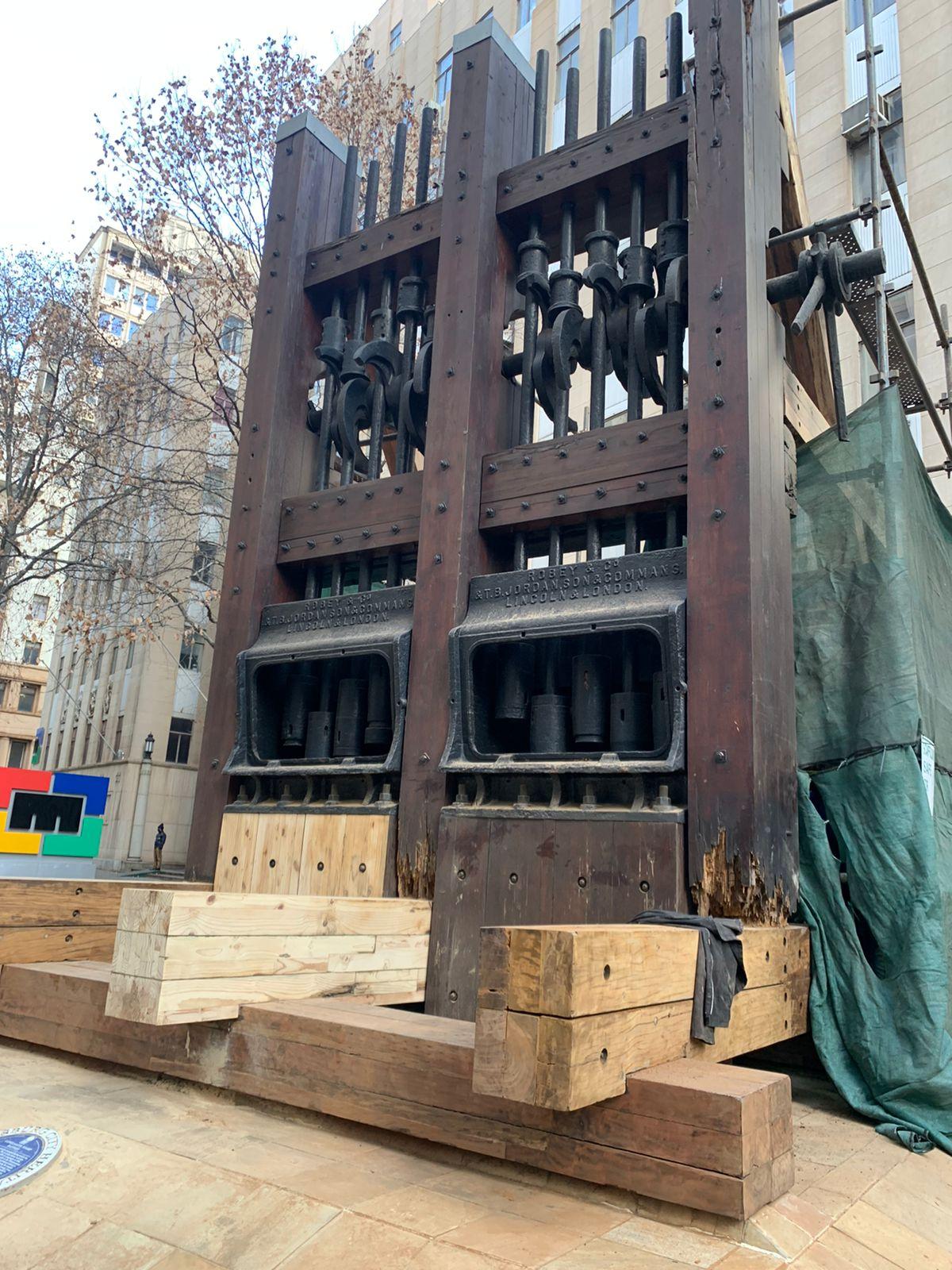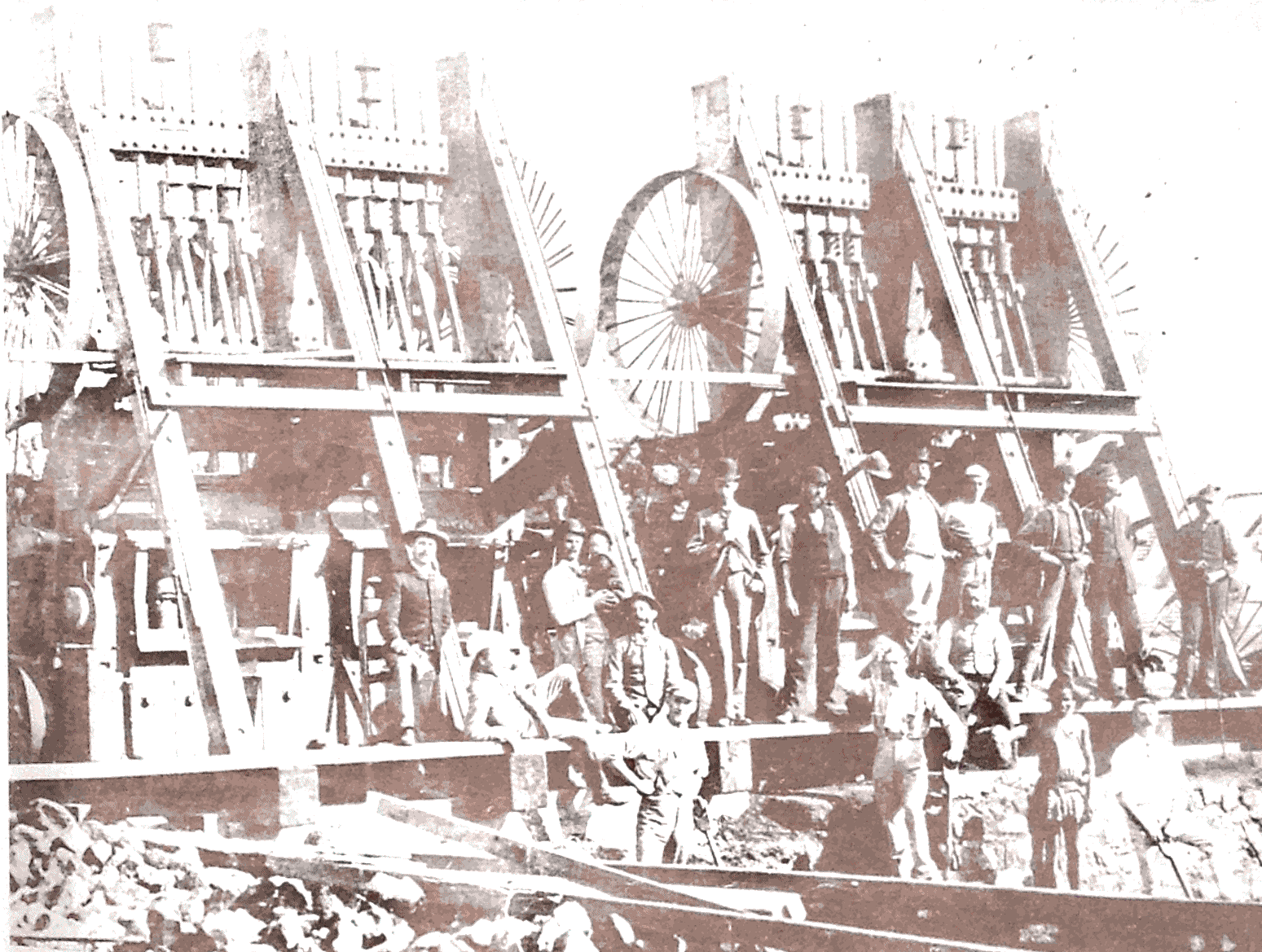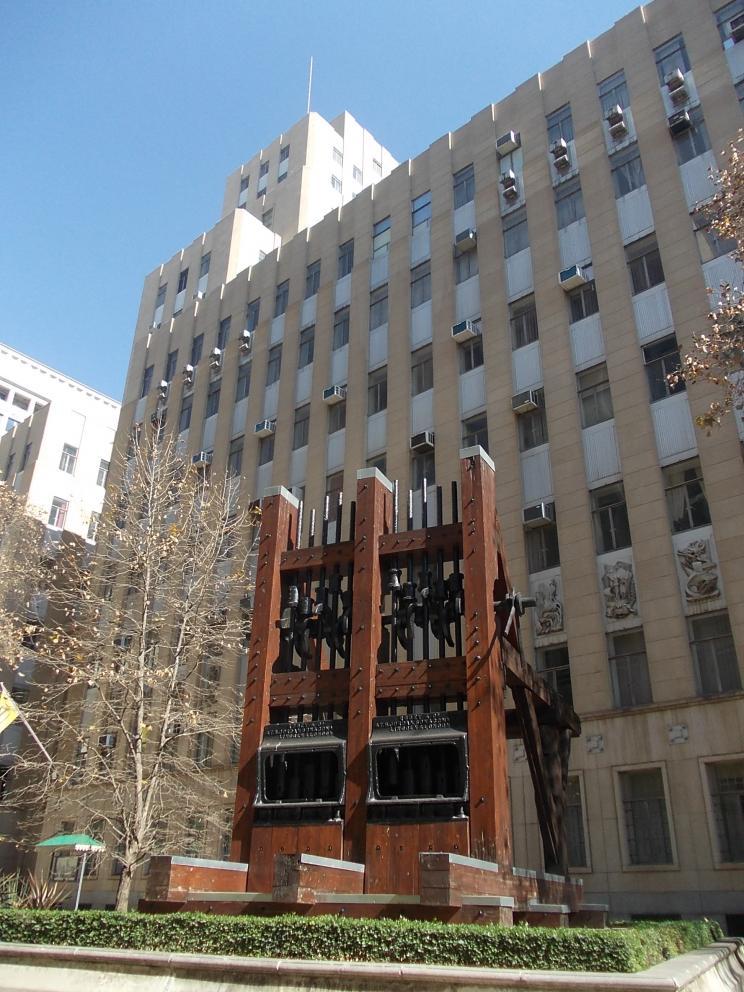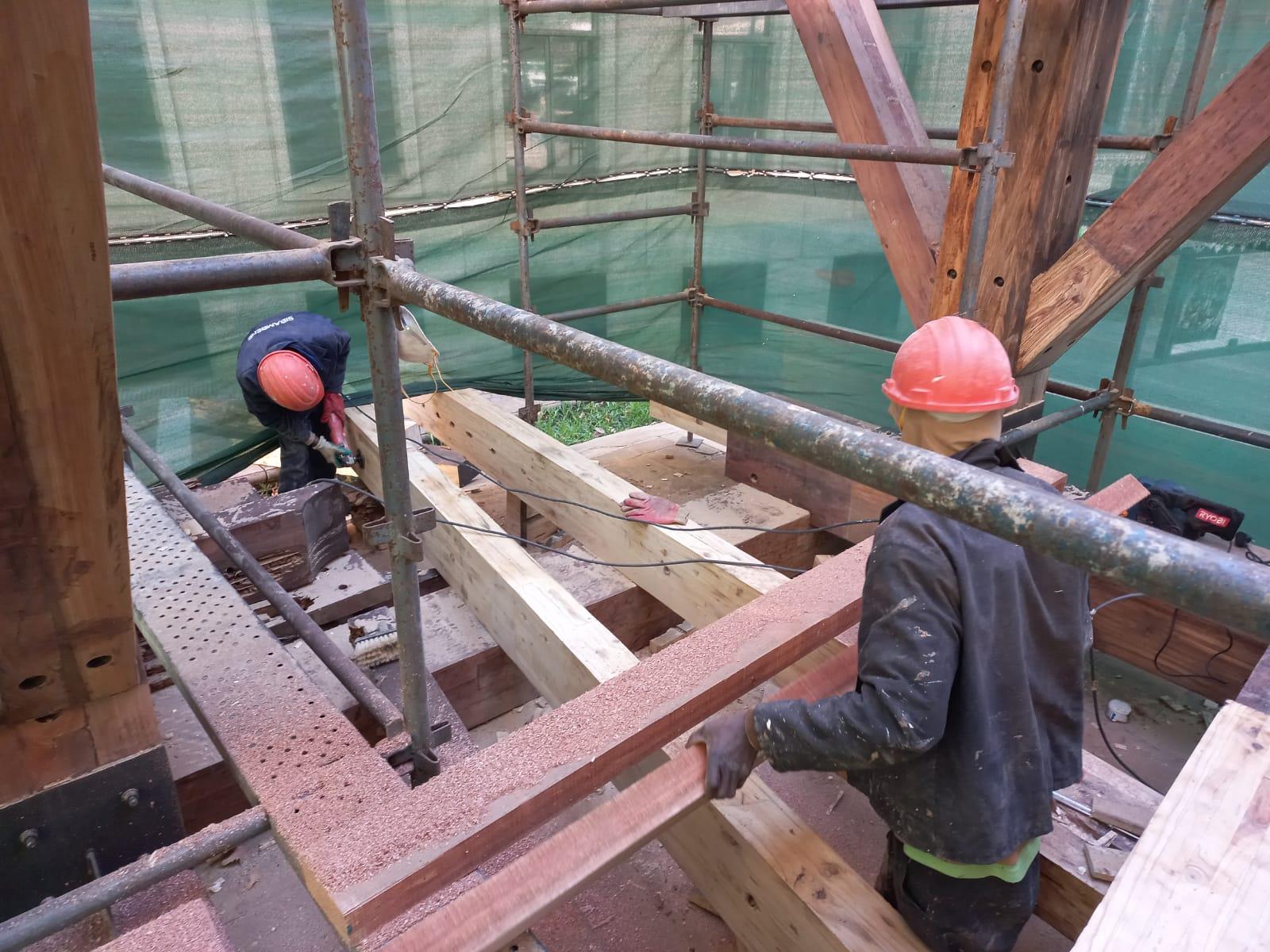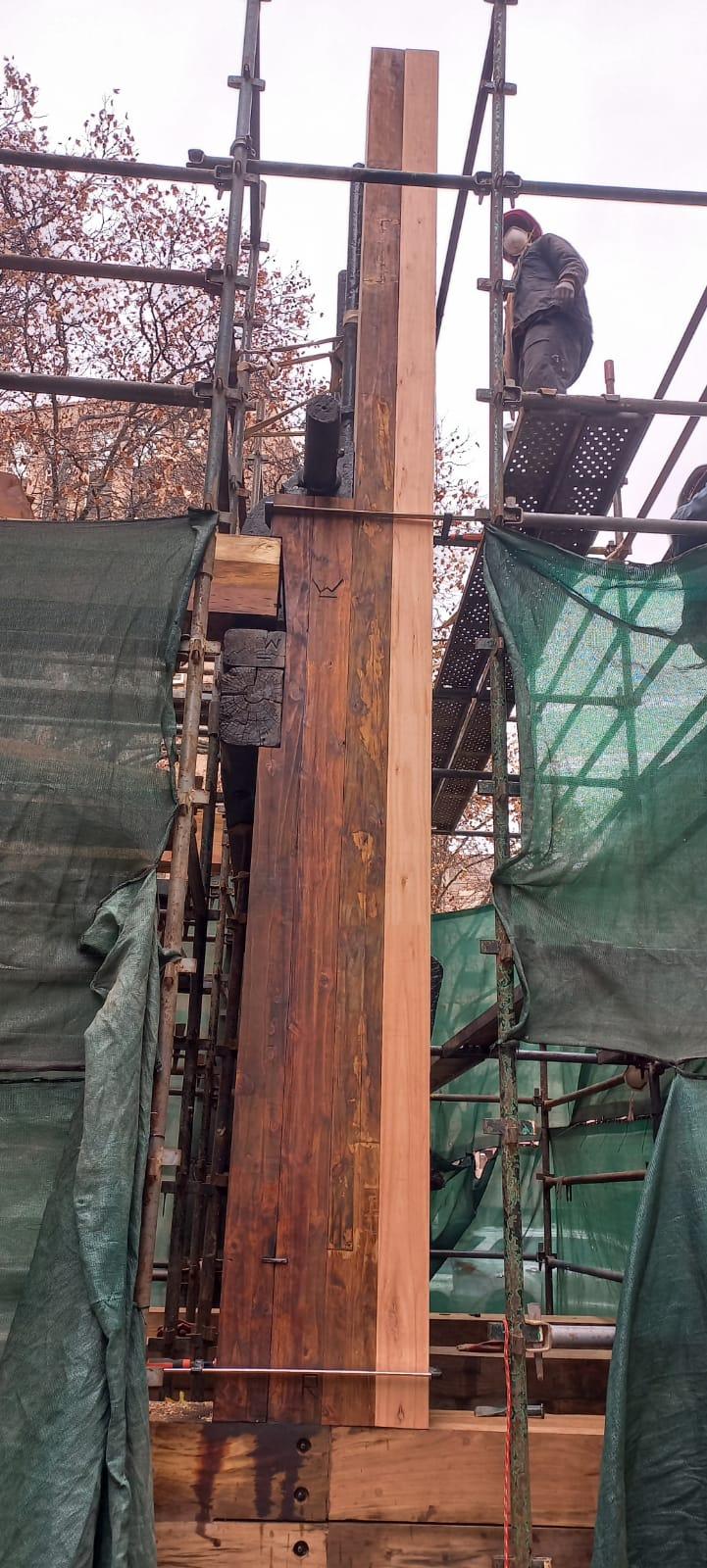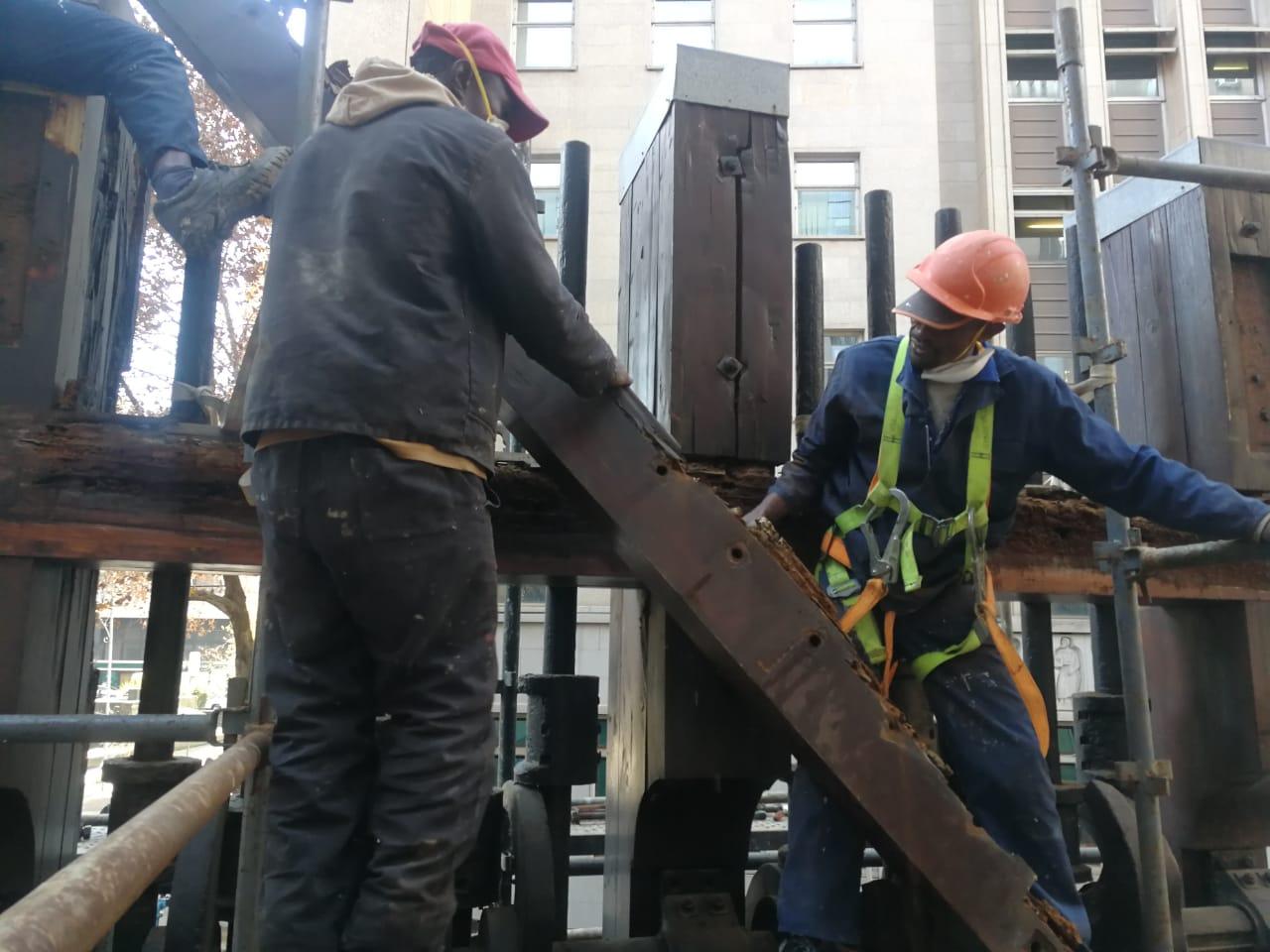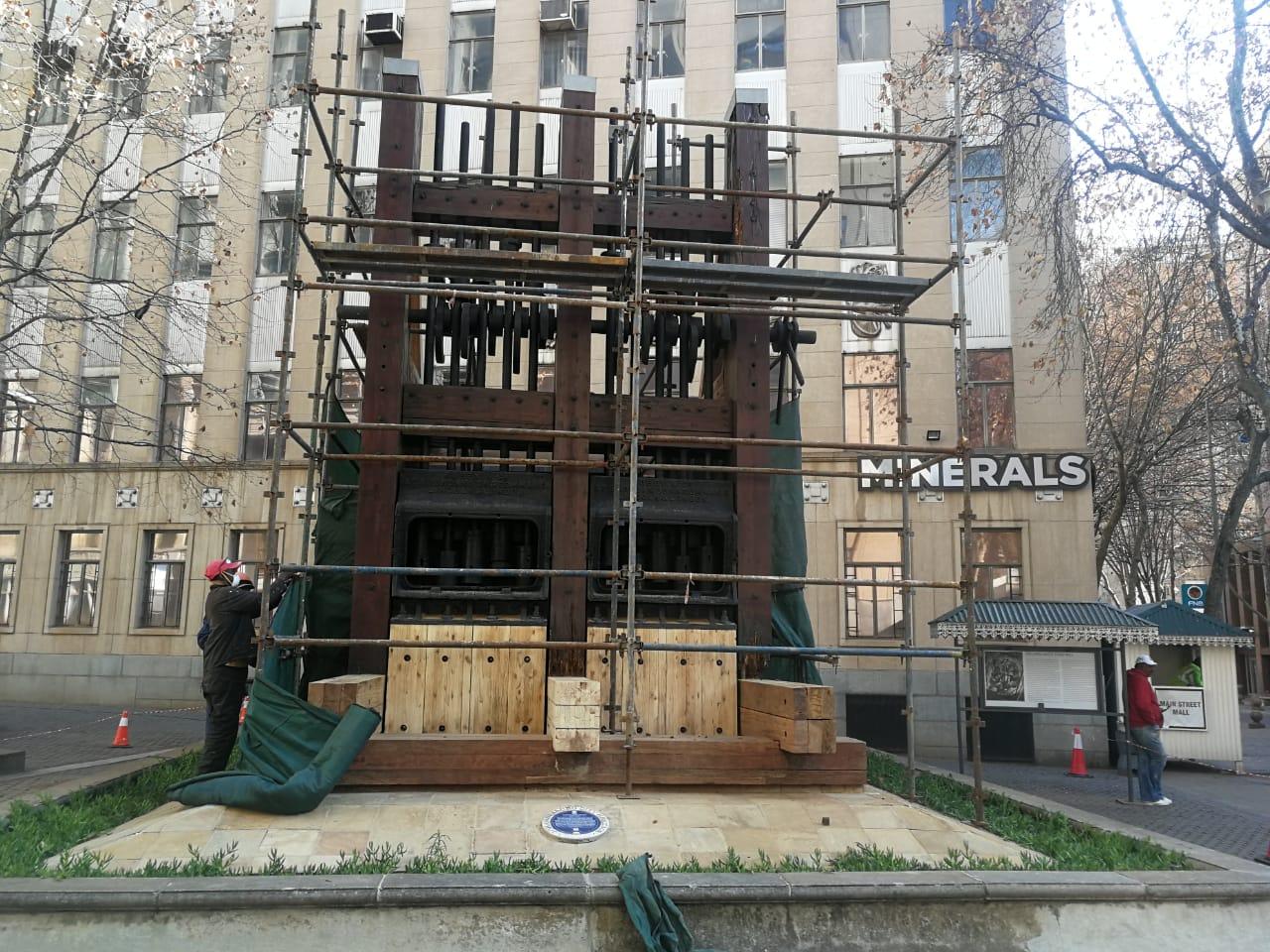
Disclaimer: Any views expressed by individuals and organisations are their own and do not in any way represent the views of The Heritage Portal. If you find any mistakes or historical inaccuracies, please contact the editor.
Harking back to Johannesburg's first gold mining boom, a rare stamp battery has been revived by a specialist restoration project. The centrepiece of an open-air mining display in central Johannesburg, this massive piece of mining machinery can be seen standing tall at the corner of Hollard and Main Street.
The landmark Langlaagte Stamp Battery (Jennifer van den Bussche)
Commissioned by the City of Johannesburg, preservation work was done by Sibambene Bolt Heritage Construction, starting in June 2021, including replacing damaged timber, and treating the heavy metal. Iron columns were carefully replaced with much effort, one at a time, as these are extremely heavy.
The sheer weight and scale is all the more remarkable, when one considers that in the old days these giant contraptions were lugged overland on ox-wagons, all the way from Cape Town to the distant goldfields on the Witwatersrand.
Stamp mills like this one were used to crush gold-bearing rock in the early days of mining on the Witwatersrand, and soon there were thousands of stamps in operation, though few of these have survived.
An old photograph of stamp batteries in action (Mining Survey 1986)
Known as the Langlaagte Stamp, this 10-stamp battery went into operation at the Robinson Mine in Langlaagte in 1886, making it one of the earliest stamp mills on the Witwatersrand. Since 2004, this stamp battery has been prominently displayed as part of the outdoor mining exhibition on Main Street, west of Gandhi Square.
The Stamp Battery on Main Street in front of the old Chamber of Mines building (The Heritage Portal)
More recently, the timber suffered extensive deterioration, caused by a combination of wood rot and termite damage.
“An estimated 400 m of timber was originally used to construct the stamp mill, and 100 m of it was affected by wood rot”, explains Cleo Sithole, Civil Engineer and Project Manager for the restoration. “We have replaced all the deteriorated timber”.
Sibambene Bolt Heritage Construction at work (Jennifer van den Bussche)
For treating the timber, a special oil was used that includes a pesticide in the mix. As well as working as a pesticide, it helps to extend the life of the timber throughout weather cycles.
“The stamp battery is a very interesting structure to work on, and we have enjoyed the experience of refurbishing this masterpiece of engineering and rare piece of heritage”, says Sithole.
Eric Itzkin is the Head of Heritage at the City of Johannesburg.
Comments will load below. If for any reason none appear click here for some troubleshooting tips. If you would like to post a comment and need instructions click here.

